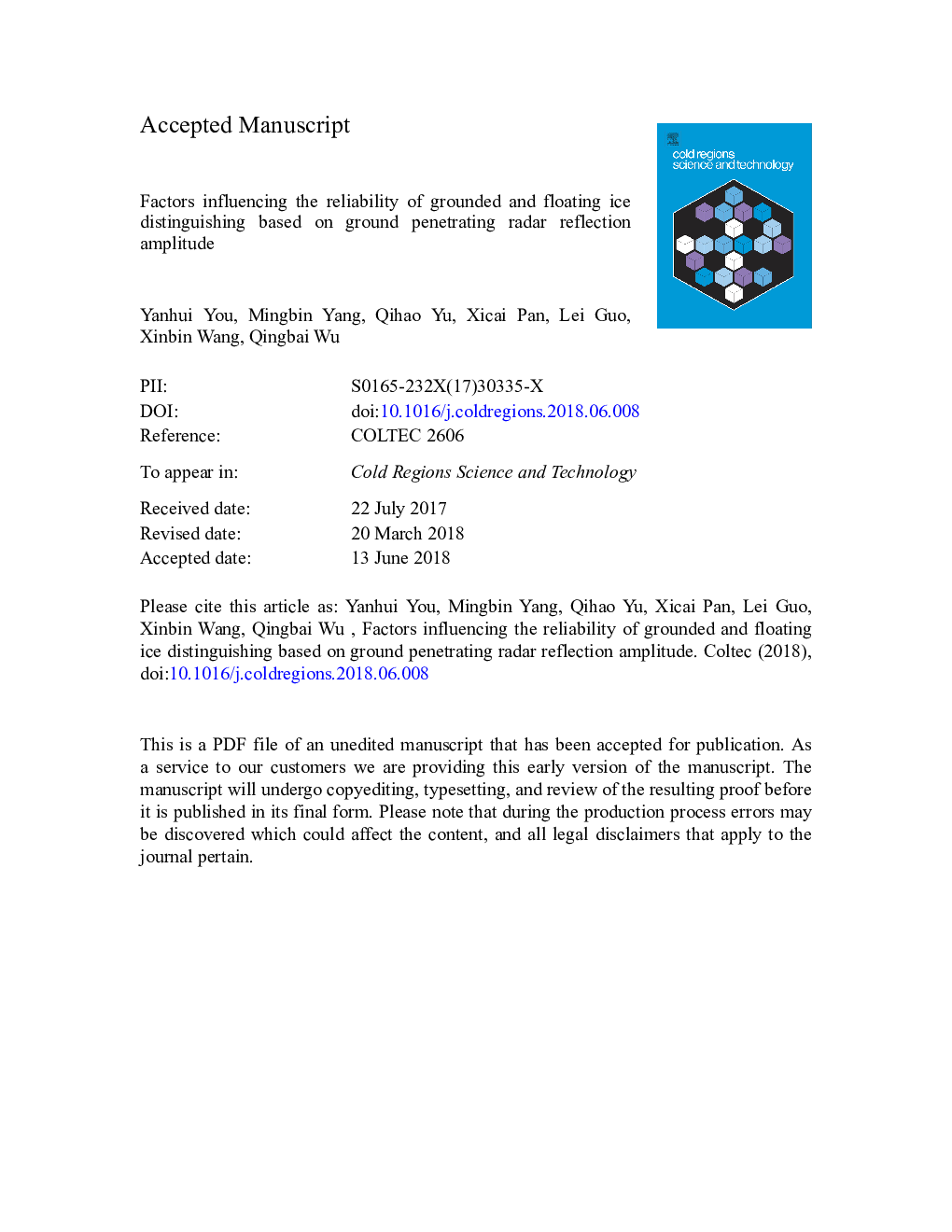| Article ID | Journal | Published Year | Pages | File Type |
|---|---|---|---|---|
| 8906368 | Cold Regions Science and Technology | 2018 | 32 Pages |
Abstract
Existing grounded ice or floating ice in late winter represents the distinct thermal state of the lake bottom, which regulates the evolution processes of thermokarst lakes. The aim of this study was to identify either grounded ice or floating ice using ground penetrating radar (GPR) and analyze the factors that influence identification. Densely spaced GPR measurements were collected using a pair of 900â¯MHz antennas in a thermokarst lake on the northeast Qinghai-Tibet Plateau. Numerical simulations were used to evaluate the factors that influence the accuracy and reliability of the GPR detection. Results show that the ice thickness was less than 1.0â¯m and indicated a spatial difference on the lake. The normalized amplitudes of reflected waves (NAR) were used for discriminating the grounded ice and floating ice. The floating ice was identified by high NAR (higher than 0.3), and the grounded ice was discriminated by low NAR (lower than 0.2). Numerical simulations showed that the sandwiched thin water and frozen sediment layer beneath the lake ice can smooth the amplitude contrasts between the grounded ice and floating ice. The air/water bubbles in ice and undulating ice bottom interfaces scatter the reflection amplitudes significantly. The factors that influence the GPR reflection amplitudes apart from the permittivity contrasts, can lead to notable uncertainties in identifying grounded and floating ice based on NAR.
Related Topics
Physical Sciences and Engineering
Earth and Planetary Sciences
Earth and Planetary Sciences (General)
Authors
Yanhui You, Mingbin Yang, Qihao Yu, Xicai Pan, Lei Guo, Xinbin Wang, Qingbai Wu,
